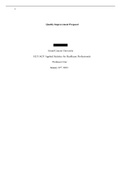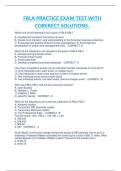Summary
Summary US Civil Rights - condensed revision notes on Trade Unions.
Very condensed revision notes on Trade Unions as part of the OCR History Course on Civil Rights in the USA. IDEAL for revision and for writing essays. Got me 100 UMS. See bundle for entire course notes. More than 50% off.
[Show more]












